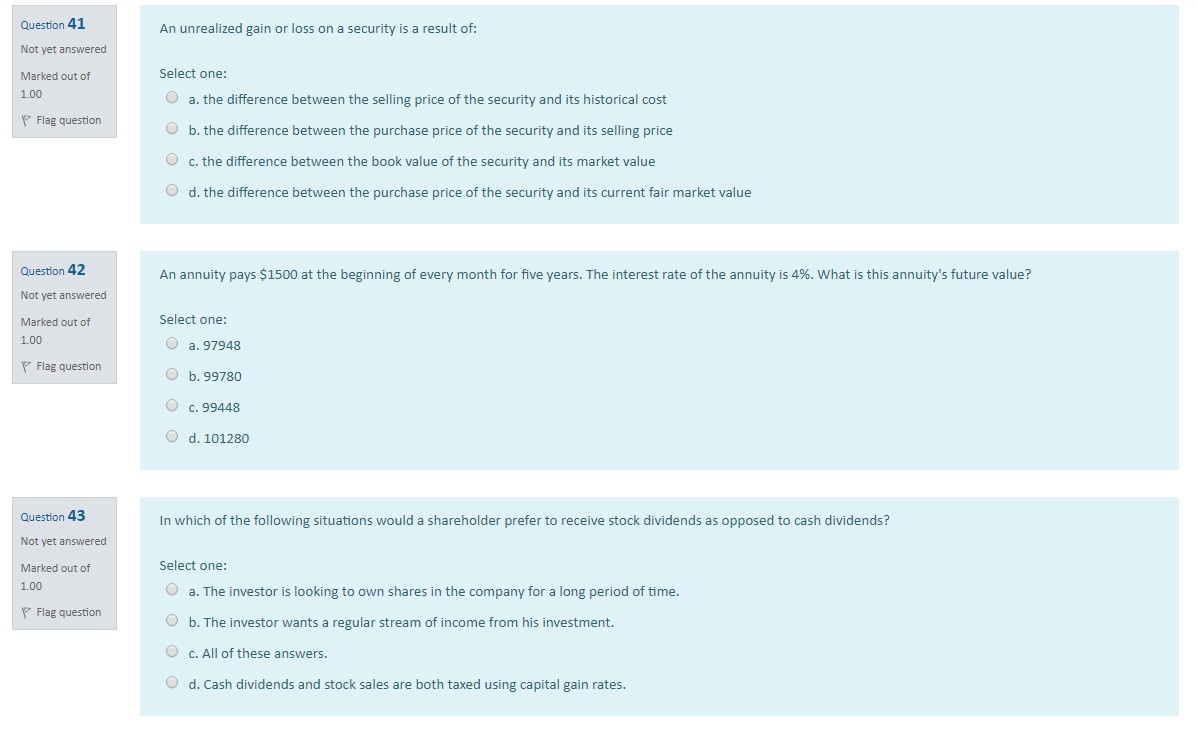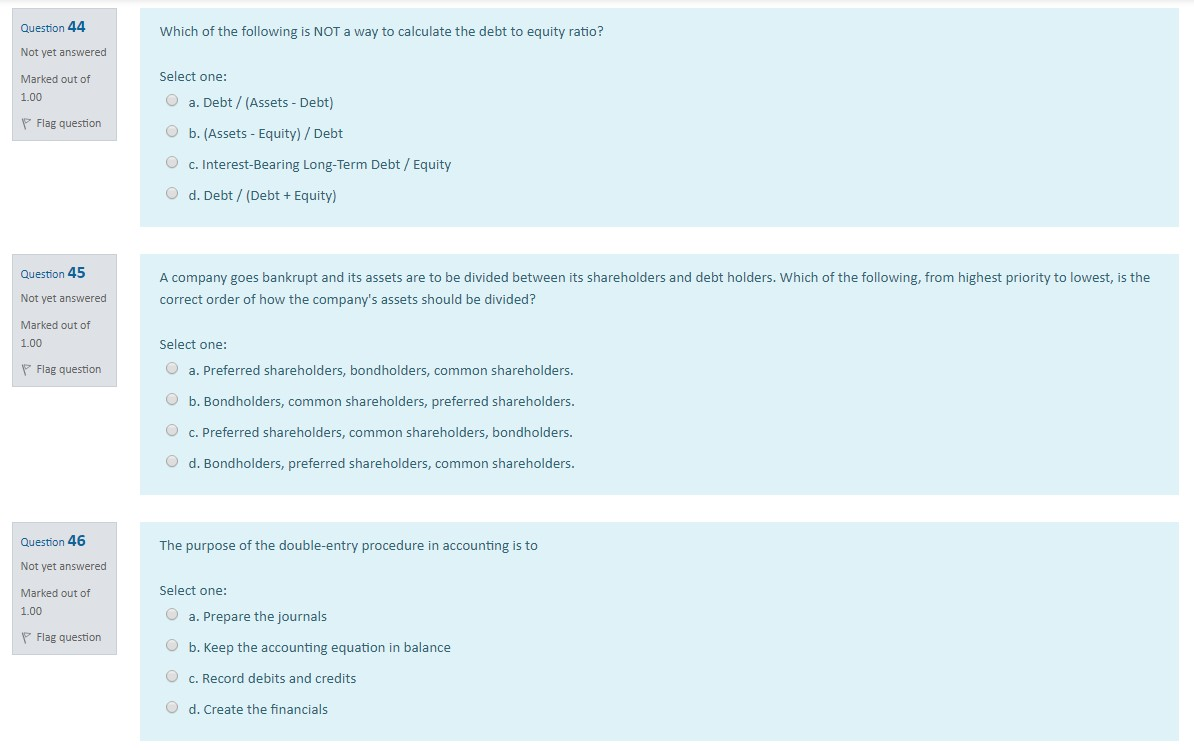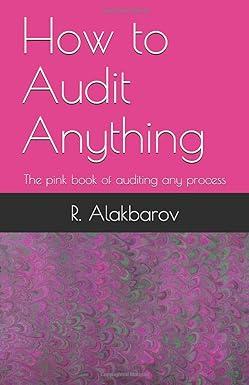

Question 41 An unrealized gain or loss on a security is a result of: Not yet answered Marked out of 1.00 Select one: a. the difference between the selling price of the security and its historical cost Flag question b. the difference between the purchase price of the security and its selling price c. the difference between the book value of the security and its market value O d. the difference between the purchase price of the security and its current fair market value Question 42 An annuity pays $1500 at the beginning of every month for five years. The interest rate of the annuity is 4%. What is this annuity's future value? Not yet answered Marked out of 1.00 Select one: O a. 97948 P Flag question b.99780 C. 99448 O d. 101280 Question 43 In which of the following situations would a shareholder prefer to receive stock dividends as opposed to cash dividends? Not yet answered Marked out of 1.00 Select one: O a. The investor is looking to own shares in the company for a long period of time. Flag question b. The investor wants a regular stream of income from his investment. c. All of these answers. d. Cash dividends and stock sales are both taxed using capital gain rates. Question 44 Which of the following is NOT a way to calculate the debt to equity ratio? Not yet answered Marked out of 1.00 Select one: a. Debt / (Assets - Debt) Flag question O b. (Assets - Equity) / Debt c. Interest-Bearing Long-Term Debt / Equity d . Debt / (Debt + Equity) O Question 45 A company goes bankrupt and its assets are to be divided between its shareholders and debt holders. Which of the following, from highest priority to lowest, is the correct order of how the company's assets should be divided? Not yet answered Marked out of 1.00 Select one: O a. Preferred shareholders, bondholders, common shareholders. Flag question O b. Bondholders, common shareholders, preferred shareholders. c. Preferred shareholders, common shareholders, bondholders. d. Bondholders, preferred shareholders, common shareholders. The purpose of the double-entry procedure in accounting is to Question 46 Not yet answered Marked out of 1.00 Select one: a. Prepare the journals b. Keep the accounting equation in balance P Flag question O c. Record debits and credits d. Create the financials








